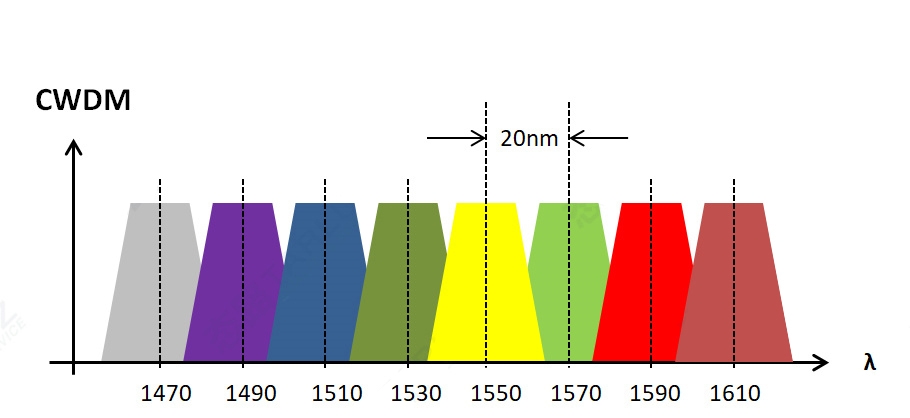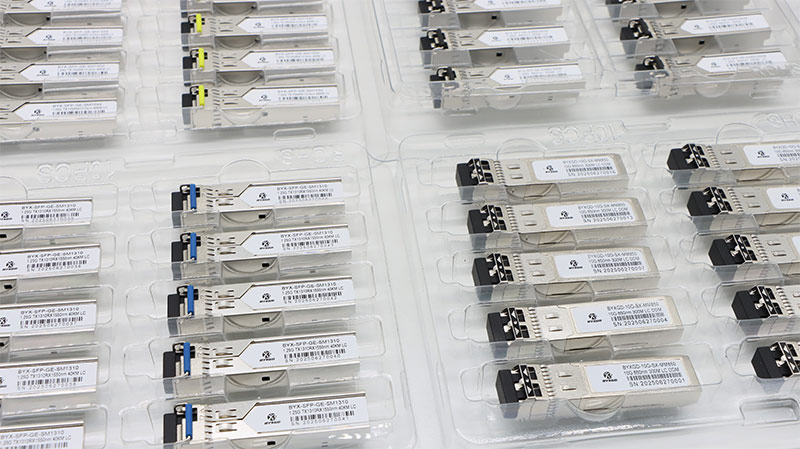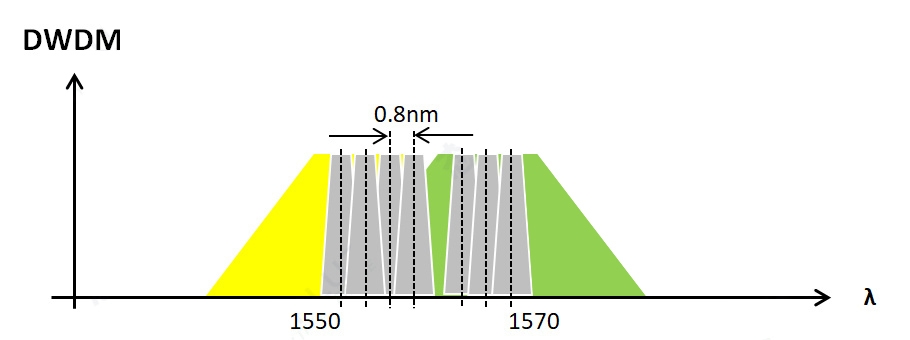SFP Modules: Your Guide to 1G Network Foundations
What contributes to a 1G network’s reliability and scalability? At the heart of this foundation is the Small Form-Factor Pluggable (SFP) module. SFP modules are compact, hot-swappable transceivers that offer maximum flexibility for applications requiring high-speed connectivity in a range of networking environments. While high-speed standards are evolving, and vendors are releasing even faster versions of SFP, the 1G SFP modules as a whole are still as important as ever for a variety of reasons; they provide a balanced offering of quality, cost-effectiveness, vendor interoperability, and reliability.
1G SFP Modules for sale
Categories of SFP Modules
Others
What Are SFP Modules and Why They’re Still Critical Today?
SFP modules function as multi-purpose optical and copper transceivers that turn electrical signals into optical signals and vice versa. Due to their small size and form factor, they can easily be placed in switches, routers, and other network hardware. In addition to size, their longevity in the marketplace is due to versatility: many different media types, wavelengths, and distances are supported. The introduction of faster modules over the last few years, such as SFP+ and the more recent product QSFP, has created a buzz as they are able to operate at speeds greater than 1 gigabit. However, 1G SFP modules will remain in use as their price-to-performance ratio is unrivaled for large deployments. Most enterprises and service providers leverage them to support backbone, campus, and access layer connectivity. The performance or interoperability across multiple vendors in which they are developed, coupled with the seamless upgrade path to faster speeds, makes them a staple item in network inventories.
1G SFP modules also support multiple link types. For example, the shorter-range multimode links adhere to 1000BASE-SX standards, while longer-haul single-mode links use 1000BASE-LX standards. Finally, copper-based 1000BASE-T modules make existing infrastructure relevant, providing choice and breadth while extending the reach of Ethernet with affordability. Moreover, 1G SFP modules facilitate fixing legacy infrastructure while continuing to meet current demands. These modules are the durable backbone that will enable scalable and reliable networks to occur, especially while speed and fiber options continue to broaden with time.
A Directory of 1G SFP Modules(1000BASE SFP)
More often than not seen as the front door to gigabit fiber connectivity, 1000BASE SFP modules come in a variety of flavors for differing link distances and media types.
- 1000BASE-SX: Operates on multimode fiber and is designed for short distances (not exceeding 550 meters), which makes it very relevant to a data center or enterprise campus.
- 1000BASE-LX: Operates on single-mode fiber up to 10 km, which is useful for MAN or longer campus connectivity.
- 1000BASE-T: Copper cabling (Cat5e/Cat6) that allows gigabit Ethernet over existing network wiring.
This trio is suitable for most standard 1G networking needs and offers the option of quality and trust with many devices.
 1G BiDi SFP: The Cost-Saving Innovator
1G BiDi SFP: The Cost-Saving Innovator
Bidirectional (BiDi) small form-factor pluggable (SFP) modules cut fiber requirements in half by utilizing two wavelengths to transmit data in both directions over a single fiber strand. This essentially reduces the fiber infrastructure required and associated costs for installation and maintenance, which can be especially beneficial in tight fiber spaces, such as with existing older campuses or high-rise buildings in urban America.
In practical terms, BiDi modules use complementary wavelengths, such as the 1310 nm wavelength for Tx and the 1550 nm for Rx, to achieve support distances of up to 40 km, depending on link quality and power budgets.
1G CWDM & DWDM SFP: The Capacity Multiplier
As demand for network bandwidth continues to grow, capital expenditure on new fiber runs can rise significantly over time. CWDM (Coarse Wavelength Division Multiplexing) and DWDM (Dense Wavelength Division Multiplexing) SFP modules address this issue by allowing a single fiber strand to carry many wavelengths, or channels, increasing usable bandwidth at rates from 8 channels (for CWDM) to more than 40 channels (for DWDM).
CWDM modules separate the wavelengths by approximately 20 nm for metro environments with typical channel counts and a reach of about 80 km. DWDM channels use ITU-T frequency grids to achieve approximately 0.8 nm spacing, allowing for higher channel densities and distances of more than 100 km, which makes them suitable for backbone networks.
All multiplexing technologies can increase the lifespan of fiber and, together with multiplexers, provide a clear upgrade path without requiring large installations of new fiber.

Solving the SFP Compatibility Puzzle: A Practical Guide
Despite claims of interoperability, SFP modules often run into compatibility issues associated with vendor firmware limitations and proprietary locking. Using a methodical validation process will help you manage and assure network stability while reducing the likelihood of failure.
- Verify switch compatibility: Using a CLI command such as “show interface transceiver details” will show if the switch recognizes the module and its status. This command provides information about the electronic status of the module, the vendor, and how the module is operationally configured. It will give you an early heads-up if there are any compatibility issues.
- Check switch firmware/software: It is always recommended to upgrade to the latest firmware that aligns with the switch vendor so you can be sure the switch has enhanced detection of both brand and third-party SFP transceiver modules, reducing the likelihood of disruptions in operations.
- Validate module authenticity: In general, authentic transceiver modules have part numbers and vendors that contain unique identifiers. This information may also be found on labels or packing slips. This helps to avoid counterfeit or unverified third-party transceiver modules that lead to failed detection or unstable performance.
- Maintain a module inventory and documentation: Always have accurate documentation of SFP and generic SFP+ modules as they are deployed. A good practice is to have documented information with the vendor, batch part number, firmware version, and geographic network access associated with the assets deployed throughout the network as a reference for support and tracking known performance.
This type of actionable checklist for the network teams will decrease costly downtime and improve deployment success.
SFP Module Selection Best Practices & Expert Recommendations
Choosing your SFP module requires balancing the technical needs you have with the operational constraints you face. The following structured approach can assist you in streamlining that process:
- A step through the selection process. Start by simply considering the required link distance. Then determine what type of cabling media (single-mode, multimode, copper) is needed to put on a shortlist of compatible SFP modules. Finally, take the network speed into consideration.
- Consider precision specifications. You will want to see the parameters provided in the datasheets (wavelength, connector type, power budget, and maximum distance it can support) and make sure that the SFP module meets your exact infrastructure requirements.
- Plan for environmental conditions. Temperature ratings will suggest where to use or not use a module, as well as considerations for differing degrees of electromagnetic interference it may be subjected to.
- Troubleshooting efficiently. Both common identifiers of faults (signal loss, no detection of a link, or warning/errors) and vendor-specific commands/tools can assist greatly in troubleshooting efficiently when you are faced with an outage.
The prudent selection process works with proper troubleshooting to help enhance the overall reliability of the network and scalability within demands.
 Enhancing a Data Center Backbone with 1G CWDM SFP Modules
Enhancing a Data Center Backbone with 1G CWDM SFP Modules
A regional data center challenged with rapidly increasing inter-rack traffic needed additional bandwidth but could not install new fiber. We deployed 1G CWDM SFP modules, which multiplexed eight wavelengths onto existing single-mode fibers.
This design increased throughput by 8x on a single-fiber infrastructure, saving over 75% in cabling expenses by installing new fibers. The project also reduced the time to deploy by four weeks, reduced downtime, and reduced the physical space used in patch panels.
Maintaining performance also improved due to simplicity; fewer fibers made it easier to monitor and maintain. This project demonstrates how CWDM can effectively extend the useful life of a system, while increasing network capacity.

 1G BiDi SFP
1G BiDi SFP Enhancing a Data Center Backbone with 1G CWDM SFP Modules
Enhancing a Data Center Backbone with 1G CWDM SFP Modules